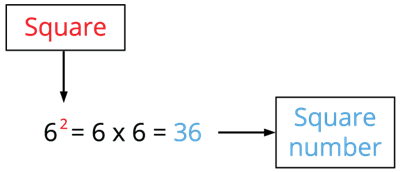PDF chapter test TRY NOW
In our earlier classes, we learned about power and exponent. Now, let us know about square and square numbers.
Look at the below pattern carefully.

In the above pattern:
The first picture has 1 row and 1 column.
The second picture has 2 rows and 2 columns.
The third picture has 3 rows and 3 columns.
The fourth picture has 4 rows and 4 columns.
1 \times 1 = 1^2 = 1
2 \times 2 = 2^2 = 4
3 \times 3 = 3^2 = 9
4 \times 4 = 4^2 = 16
Here, we multiply the number by itself, and we obtained a square of that number.
The numbers 1, 4, 9 and 16 are called square numbers.
If a natural number (m) is expressed as a power of 2, then the number (m) is called a square number. That is m = n^2. A square number is also called a perfect number.

Important!
When we multiply a number by itself, we obtained a square of that number.
